Fabrice Harel-Canada
Measuring Psychological Depth in Language Models
Jun 18, 2024Abstract:Evaluations of creative stories generated by large language models (LLMs) often focus on objective properties of the text, such as its style, coherence, and toxicity. While these metrics are indispensable, they do not speak to a story's subjective, psychological impact from a reader's perspective. We introduce the Psychological Depth Scale (PDS), a novel framework rooted in literary theory that measures an LLM's ability to produce authentic and narratively complex stories that provoke emotion, empathy, and engagement. We empirically validate our framework by showing that humans can consistently evaluate stories based on PDS (0.72 Krippendorff's alpha). We also explore techniques for automating the PDS to easily scale future analyses. GPT-4o, combined with a novel Mixture-of-Personas (MoP) prompting strategy, achieves an average Spearman correlation of $0.51$ with human judgment while Llama-3-70B scores as high as 0.68 for empathy. Finally, we compared the depth of stories authored by both humans and LLMs. Surprisingly, GPT-4 stories either surpassed or were statistically indistinguishable from highly-rated human-written stories sourced from Reddit. By shifting the focus from text to reader, the Psychological Depth Scale is a validated, automated, and systematic means of measuring the capacity of LLMs to connect with humans through the stories they tell.
Human-in-the-Loop Synthetic Text Data Inspection with Provenance Tracking
Apr 29, 2024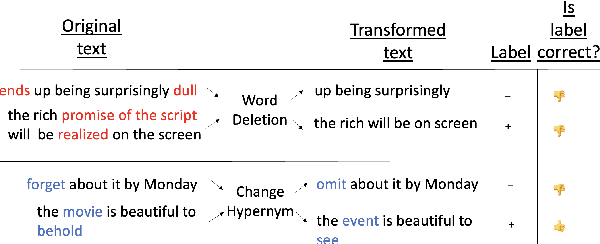
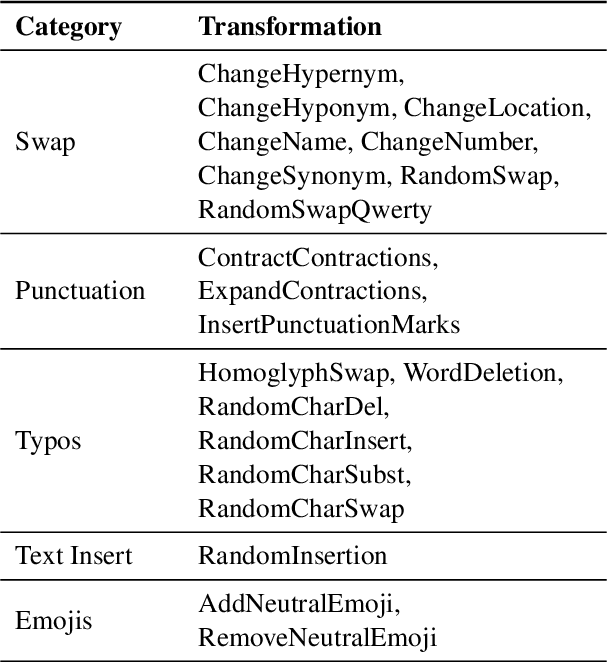
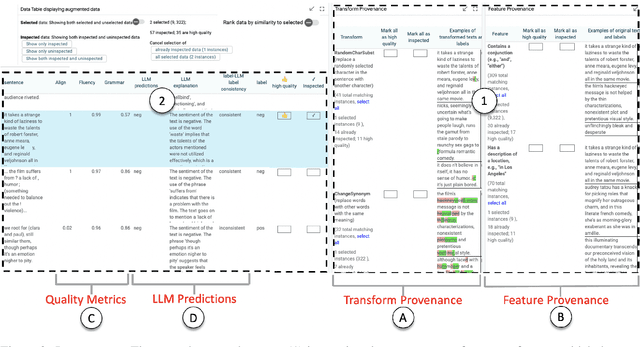
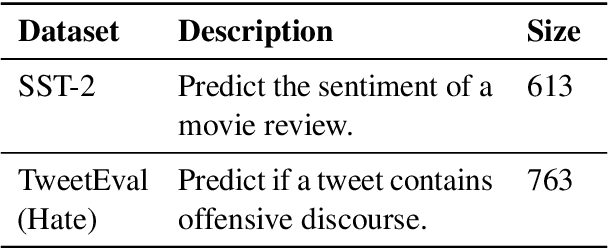
Abstract:Data augmentation techniques apply transformations to existing texts to generate additional data. The transformations may produce low-quality texts, where the meaning of the text is changed and the text may even be mangled beyond human comprehension. Analyzing the synthetically generated texts and their corresponding labels is slow and demanding. To winnow out texts with incorrect labels, we develop INSPECTOR, a human-in-the-loop data inspection technique. INSPECTOR combines the strengths of provenance tracking techniques with assistive labeling. INSPECTOR allows users to group related texts by their transformation provenance, i.e., the transformations applied to the original text, or feature provenance, the linguistic features of the original text. For assistive labeling, INSPECTOR computes metrics that approximate data quality, and allows users to compare the corresponding label of each text against the predictions of a large language model. In a user study, INSPECTOR increases the number of texts with correct labels identified by 3X on a sentiment analysis task and by 4X on a hate speech detection task. The participants found grouping the synthetically generated texts by their common transformation to be the most useful technique. Surprisingly, grouping texts by common linguistic features was perceived to be unhelpful. Contrary to prior work, our study finds that no single technique obviates the need for human inspection effort. This validates the design of INSPECTOR which combines both analysis of data provenance and assistive labeling to reduce human inspection effort.
Sibylvariant Transformations for Robust Text Classification
May 10, 2022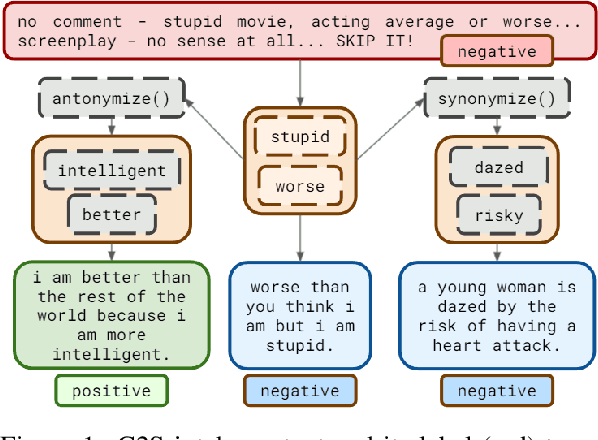
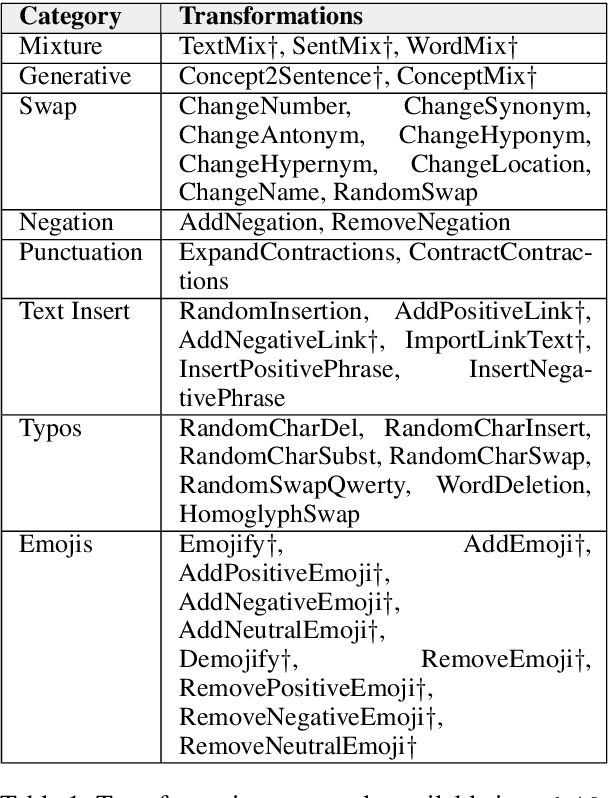
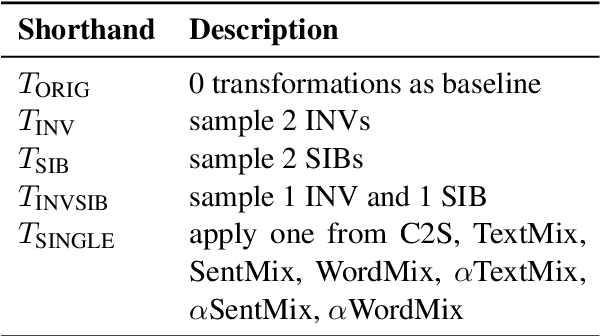
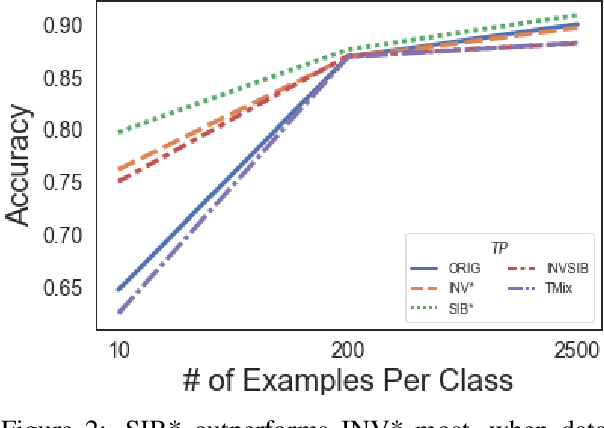
Abstract:The vast majority of text transformation techniques in NLP are inherently limited in their ability to expand input space coverage due to an implicit constraint to preserve the original class label. In this work, we propose the notion of sibylvariance (SIB) to describe the broader set of transforms that relax the label-preserving constraint, knowably vary the expected class, and lead to significantly more diverse input distributions. We offer a unified framework to organize all data transformations, including two types of SIB: (1) Transmutations convert one discrete kind into another, (2) Mixture Mutations blend two or more classes together. To explore the role of sibylvariance within NLP, we implemented 41 text transformations, including several novel techniques like Concept2Sentence and SentMix. Sibylvariance also enables a unique form of adaptive training that generates new input mixtures for the most confused class pairs, challenging the learner to differentiate with greater nuance. Our experiments on six benchmark datasets strongly support the efficacy of sibylvariance for generalization performance, defect detection, and adversarial robustness.
NL-Augmenter: A Framework for Task-Sensitive Natural Language Augmentation
Dec 06, 2021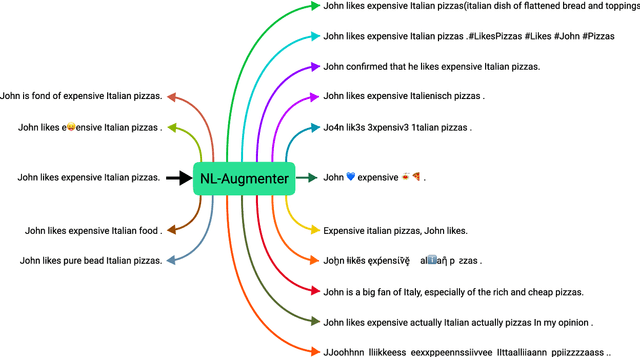
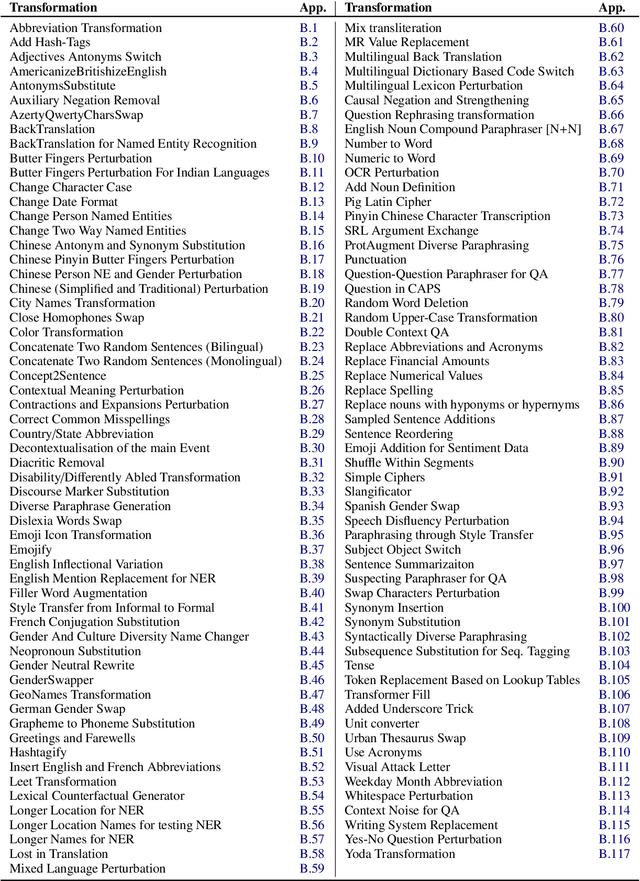
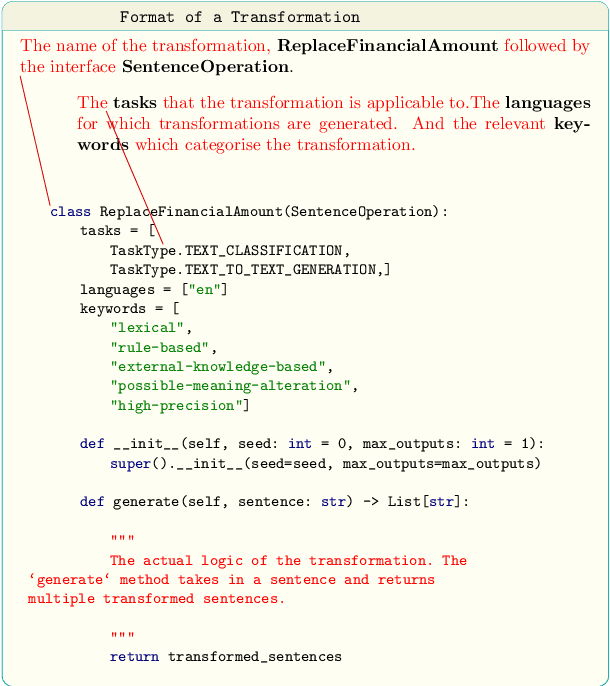
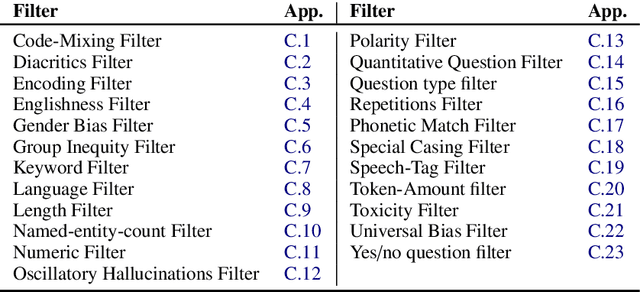
Abstract:Data augmentation is an important component in the robustness evaluation of models in natural language processing (NLP) and in enhancing the diversity of the data they are trained on. In this paper, we present NL-Augmenter, a new participatory Python-based natural language augmentation framework which supports the creation of both transformations (modifications to the data) and filters (data splits according to specific features). We describe the framework and an initial set of 117 transformations and 23 filters for a variety of natural language tasks. We demonstrate the efficacy of NL-Augmenter by using several of its transformations to analyze the robustness of popular natural language models. The infrastructure, datacards and robustness analysis results are available publicly on the NL-Augmenter repository (\url{https://github.com/GEM-benchmark/NL-Augmenter}).
Is Q-Learning Provably Efficient? An Extended Analysis
Sep 22, 2020


Abstract:This work extends the analysis of the theoretical results presented within the paper Is Q-Learning Provably Efficient? by Jin et al. We include a survey of related research to contextualize the need for strengthening the theoretical guarantees related to perhaps the most important threads of model-free reinforcement learning. We also expound upon the reasoning used in the proofs to highlight the critical steps leading to the main result showing that Q-learning with UCB exploration achieves a sample efficiency that matches the optimal regret that can be achieved by any model-based approach.
 Add to Chrome
Add to Chrome Add to Firefox
Add to Firefox Add to Edge
Add to Edge